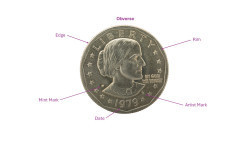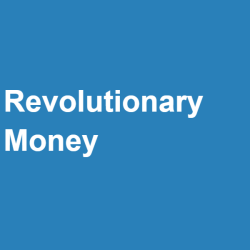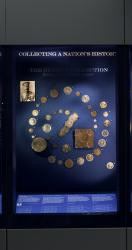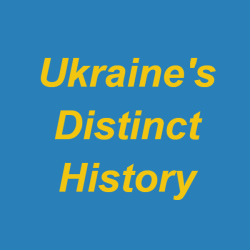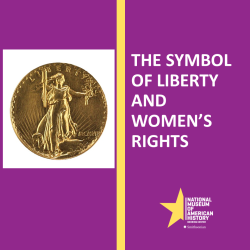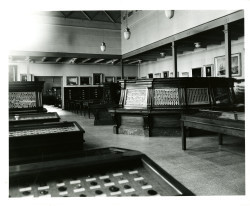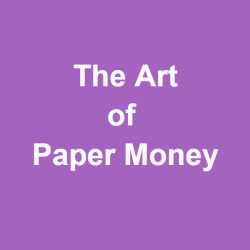Jennifer Gloede
Museum Specialist
National Museum of American History
I serve as the collections manager for the National Numismatic Collection at the National Museum of American History.
The collections under my name have been developed collaboratively with Ellen Feingold, curator of the National Numismatic Collection, and others.
Jennifer Gloede's collections
Parts of a Coin
<p>Using examples of United States coins from the National Numismatic Collection, this Learning Lab is intended to teach students the parts of a coin and common terms used to describe them. </p>
 Jennifer Gloede
Jennifer Gloede
35
Revolutionary Money
<p>This Learning Lab is based on a display titled "Revolutionary Money" located in <em>The Value of Money</em> exhibition at the National Museum of American History and available online <a href="https://americanhistory.si.edu/explore/exhibitions/value-money/online/changing-display/revolutionary-money" target="_blank">here</a>. Dr. Ellen Feingold, curator of the National Numismatic Collection, curated this display. </p>
<p><strong><u>Questions to guide learning:</u></strong></p>
<ul><li>What are the origins of our economic/monetary system? </li><li>What money challenges did American colonists face?</li><li>What did money look like in colonial America? What types of money did American colonists rely on? </li><li>What was the importance of paper money in the colonies? What do designs on colonial and Continental banknotes tell us about the aspirations of the colonists? What can it tell us about the significance of the Revolutionary War in the America’s founding?</li></ul>
<p><strong></strong><br></p>
 Jennifer Gloede
Jennifer Gloede
24
Russian Coinage and Grand Duke Georgii Mikhailovich
<p>The Grand Duke Georgii Mikhailovich collection of approximately 13,000 Russian coins and medals is among the most comprehensive Russian numismatic collections outside of Russia. Mikhailovich had a lifelong commitment to collecting and documenting Russian coinage and published extensively on the topic. Following the Russian Revolution, Mikhailovich was executed in 1919. His wife and daughters went into exile and eventually sold the collection at auction. It changed hands a number of times before it was purchased by Lammot du Pont, whose son donated it to the National Numismatic Collection in the 1950s. This collection is a rich resource for the study of Russia, Europe, and numismatics more broadly.</p>
<p> </p>
<p>A small portion of the Mikhailovich collection was displayed in <a href="http://americanhistory.si.edu/exhibitions/value-money"><em>The Value of Money </em>exhibition</a> at the National Museum of American History.</p>
<p><br></p>
<p>Text adapted from <a href="https://scholarlypress.si.edu/store/history-american-culture/value-of-money/"><em>The Value of Money</em></a> by Ellen R. Feingold, Smithsonian Institution Scholarly Press, 2015.</p>
 Jennifer Gloede
Jennifer Gloede
35
The Art of Paper Money
<p>American banknotes currently have a standardized design, but they were once canvases for a diverse body of beautiful and creative artwork. During the second half of the 19th century, U.S. federal banknotes featured colorful designs with inspiring figures, moving scenes, and unexpected details. This Learning Lab includes highlights from the U.S. Department of the Treasury’s collection of banknotes, which are now part of the Smithsonian’s National Numismatic Collection. Together they demonstrate the skill of the artists and engravers who created the notes, and the beauty of American currency in the 19th and early 20th century. </p>
<p></p>
 Jennifer Gloede
Jennifer Gloede
18
Paper Money of the United States
<p><strong>The United States Federal Government began printing banknotes called Demand Notes </strong>in 1861 <strong>to help finance the American Civil War. In the decades that followed it issued many different types of notes including Legal Tender Notes, Compound Interest Notes, Interest Bearing Notes, Gold Certificates, Silver Certificates, National Bank Notes, Treasury Bank Notes, and Fractional Currency. </strong>Each note was guaranteed or backed in a different way. In 1914, the U.S. introduced Federal Reserve Notes and made them the single standardized note type by the late 1920s. The designs of the Federal Reserve Notes of the late 1920s remain largely unchanged today. </p>
<p><strong>This Learning Lab showcases examples of each of the different types of notes from the Smithsonian’s National Numismatic Collection.</strong> </p>
 Jennifer Gloede
Jennifer Gloede
44
Money and the Civil War
<p>Money is a powerful source for understanding the Civil War. The banknotes of that era reflect the differing values and perspectives of the political and military leadership in the North and South. </p>
<p>Prior to the Civil War, states issued charters to private banknotes and businesses allowing them to make their own banknotes. At the beginning of the Civil War, the U.S. government issued federal notes, often called <em>greenbacks</em>, to pay for the war. These notes feature images depicting core principles of democracy, such as liberty. The government of the Confederate States of America also issued its own paper money depicting Confederate leadership and scenes from life in the South, including painful images of slavery. The difference in messages on the notes reflects the division between the northern and southern regions of the U.S. during the Civil War.</p>
<ul></ul>
<p><br></p>
 Jennifer Gloede
Jennifer Gloede
18

